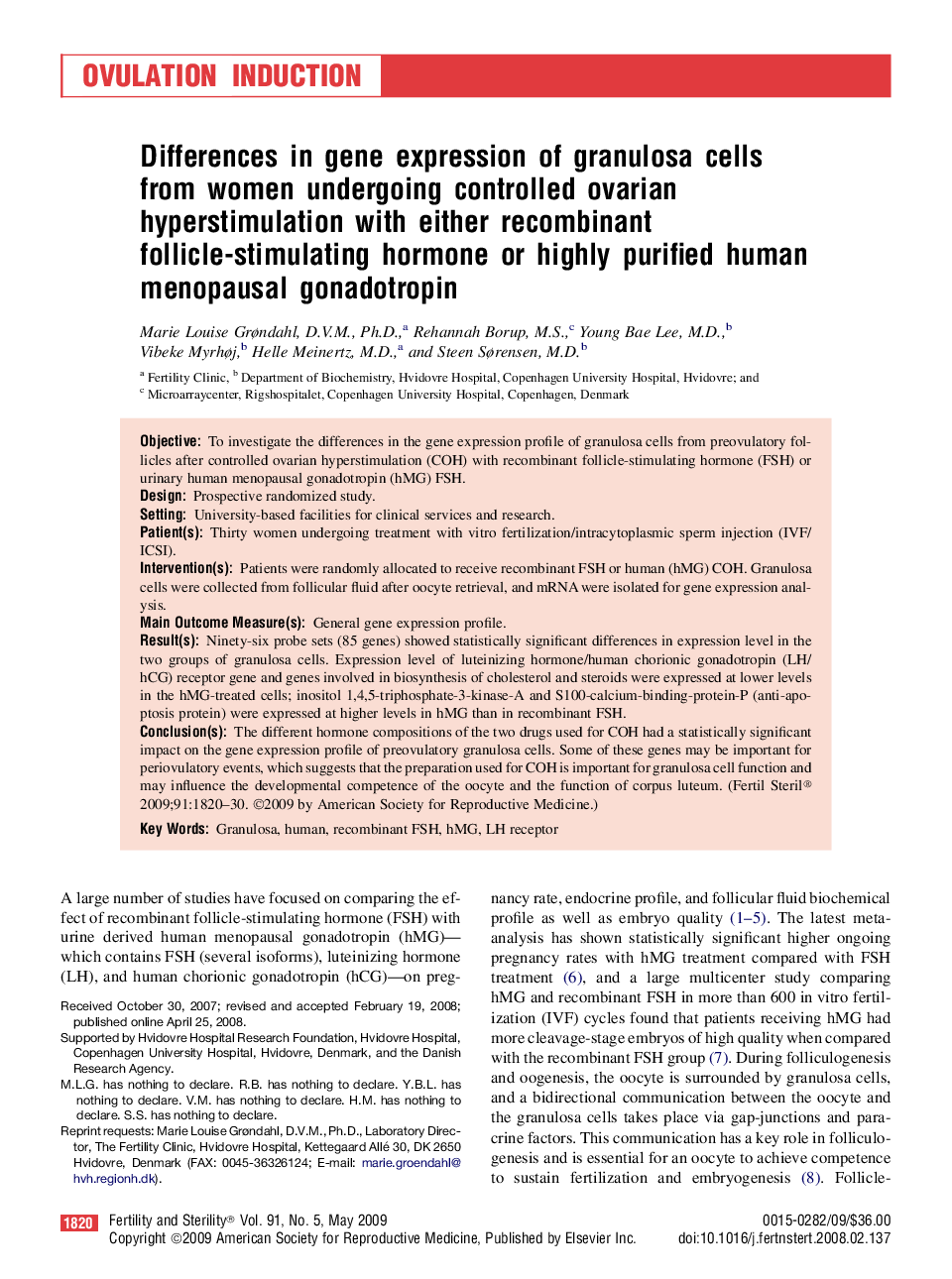| Article ID | Journal | Published Year | Pages | File Type |
|---|---|---|---|---|
| 3938679 | Fertility and Sterility | 2009 | 11 Pages |
ObjectiveTo investigate the differences in the gene expression profile of granulosa cells from preovulatory follicles after controlled ovarian hyperstimulation (COH) with recombinant follicle-stimulating hormone (FSH) or urinary human menopausal gonadotropin (hMG) FSH.DesignProspective randomized study.SettingUniversity-based facilities for clinical services and research.Patient(s)Thirty women undergoing treatment with vitro fertilization/intracytoplasmic sperm injection (IVF/ICSI).Intervention(s)Patients were randomly allocated to receive recombinant FSH or human (hMG) COH. Granulosa cells were collected from follicular fluid after oocyte retrieval, and mRNA were isolated for gene expression analysis.Main Outcome Measure(s)General gene expression profile.Result(s)Ninety-six probe sets (85 genes) showed statistically significant differences in expression level in the two groups of granulosa cells. Expression level of luteinizing hormone/human chorionic gonadotropin (LH/hCG) receptor gene and genes involved in biosynthesis of cholesterol and steroids were expressed at lower levels in the hMG-treated cells; inositol 1,4,5-triphosphate-3-kinase-A and S100-calcium-binding-protein-P (anti-apoptosis protein) were expressed at higher levels in hMG than in recombinant FSH.Conclusion(s)The different hormone compositions of the two drugs used for COH had a statistically significant impact on the gene expression profile of preovulatory granulosa cells. Some of these genes may be important for periovulatory events, which suggests that the preparation used for COH is important for granulosa cell function and may influence the developmental competence of the oocyte and the function of corpus luteum.
